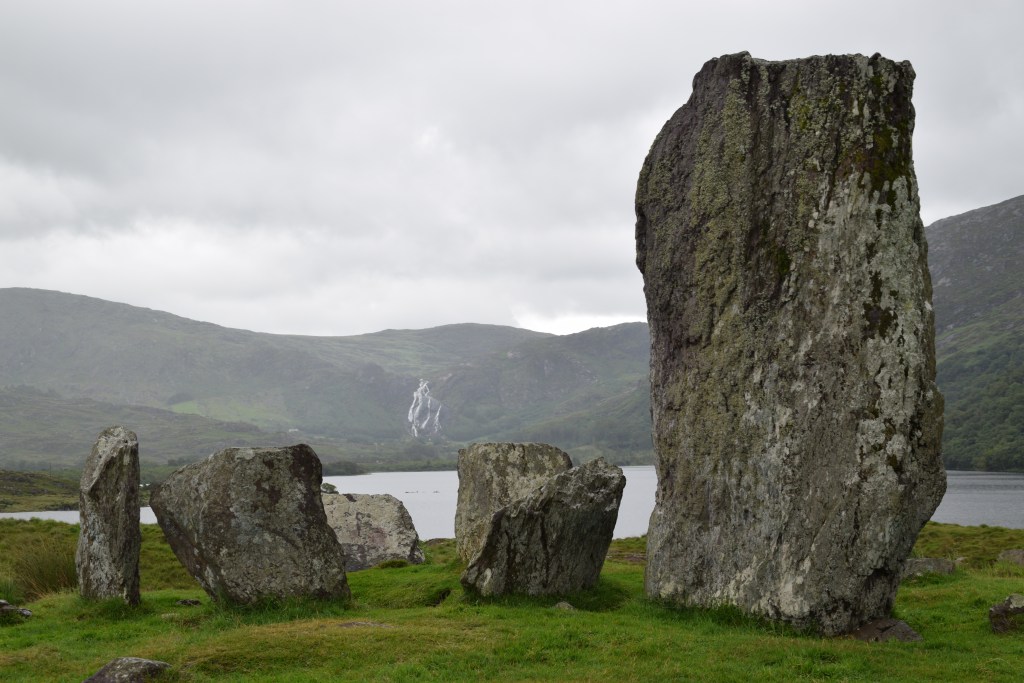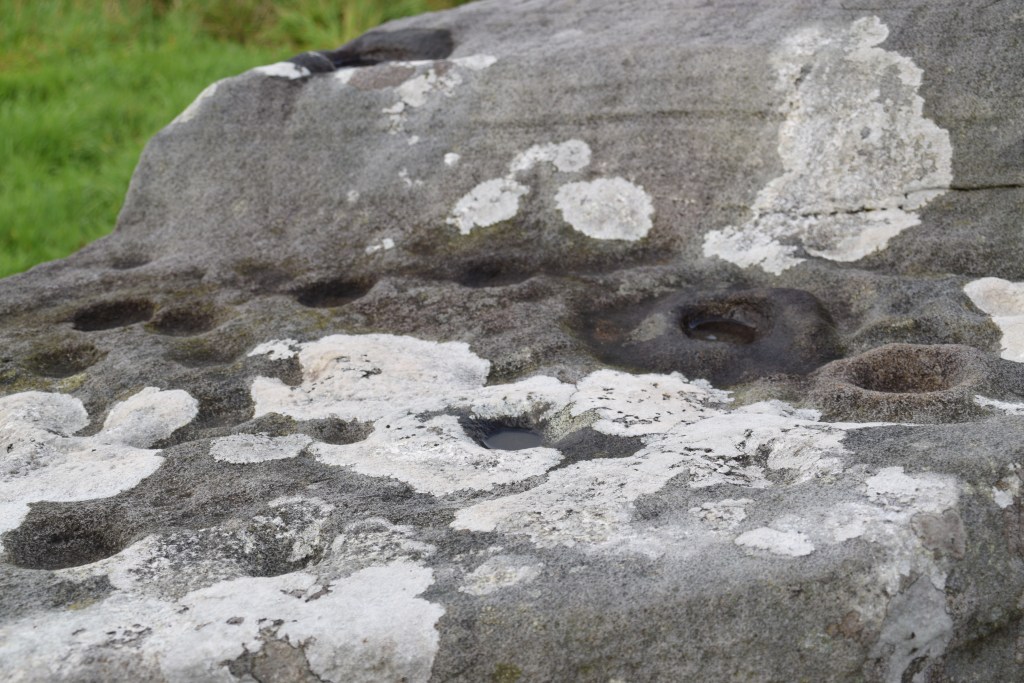This week’s theme from Debbie for One Word Sunday is ROCK
Rocks we have aplenty!!! This is what our ancestors did with them……
This is a Wedge Tomb. In basic terms, this would be a stone box with a roof slab (there are about 400 in Ireland).

Boulder Tomb – A major part of the pedestal has been removed from beneath the rock to create a chamber or sacred space. The boulder has been levered up with stones or wedges.

A Dolmen is a type of single-chamber megalithic tomb, usually consisting of two or more vertical megaliths supporting a large flat horizontal capstone or “table”. Most are early Neolithic – how the people of the time manipulated these huge capstones into place is unknown! There are more than 100 scattered throughout Ireland, in various states of repair.

There are 187 Stone Circles in Ireland. In addition to being used as places of burial, they were probably connected to agricultural events, such as the summer solstice.

This Irish Rock Art – cup and ring – is a sample of Atlantic Rock Art which can be found along the Atlantic fringe from Spain to Scotland.

Link to One Word Sunday at Debbie’s here

Looks very familiar with my world now ….
Very interesting Marie 🙂 I’ve seen similar cup and ring marking in Northumberland. And I spotted a rather lovely bonus waterfall!
The waterfall is in Kerry .. some backdrop isn’t it!!!
Yes, wonderful!
I have seen many of course, but I wasn’t aware there were so many in Ireland. Your photos show them off well.
I knew there were plenty of rock formations scattered throughout the country but I’d no idea there were so many in Kerry until last summer..and so we’ll preserved …
Great post with rocks at centrestage
Thank you!!!
I had no idea that Ireland had that many stone circles. Isn’t it amazing that they were able to move those humungous stones into specific places? I find all those rock formations fascinating.
And just imagine how much has been moved and destroyed due to cultivation and farming …
Wasn’t it some achievement to hoist those massive stones…
I often wonder how the oral history of them was lost. I will have to look up some Ireland circles for our next trip there.
Nowadays of course they can date them and gather so much information from everything they unearth but alas the stories are gone….
An interesting read about the tombs.
The countryside must have been literally littered with them at one stage – some of them would have been later used to shelter farm animals.
Where is the wedge tomb above located?
That’s in Cavan Burren Park Elliot – there are a lot of archaeological features in that part of the country.